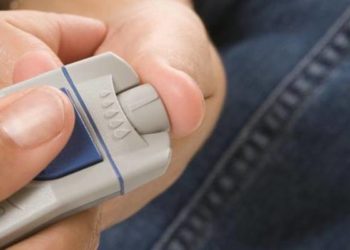One-time telephone interventions have little effect on drug abuse
1. No significant difference from baseline drug use was observed in patients who received a thirty minute telephone session of motivational interviewing.
2. Individuals with a high severity of drug abuse were more likely to enter specialist drug treatment programs and reduce their use of the emergency department.
Evidence Rating Level: 1 (Excellent)
Study Rundown: In our country, alcohol and drug abuse affects individuals of all socioeconomic classes, cultures, and ages. The physical effects of drug abuse are well known and include liver failure, kidney disease, encephalopathy, and cardiomyopathy, among other systemic conditions. The public health and societal implications of drug abuse, however, are less advertised. These include increased mortality, crime, lost productivity in the workplace, and ever increasing medical care costs. Such consequences of drug abuse affect not only the abuser but the country as a whole.
With this in mind, this study set out to determine if thirty minute telephone interviews concerning an individual’s drug abuse may have an affect of their frequency of use. Patients were recruited from waiting rooms and primary care clinics. Secondary outcomes included inpatient hospitalizations, arrest records, and death rates. Ultimately, no significant decrease in drug use nor secondary outcomes was observed at 3 months after the intervention. A major weakness of the study was the heterogeneity of drug use among its participants, including marijuana, opiates, and stimulants. Another weakness was a high rate of mental illness in the study population. Combined, these aspects of the study greatly hinder reproducibility. While the intervention did not prove workable, it did demonstrate how much more work is needed to affect drug abuse on a grand scale. Future studies should focus on examining the effect of more targeted, aggressive, interventions on those with a high severity of abuse.
Click to read the study, published today in JAMA
Relevant Reading: Screening, Brief Intervention, and Referral to Treatment (SBIRT): toward a public health approach to the management of substance abuse
In-Depth [randomized controlled trial]: This 2-group randomized clinical trial consisted of 846 patients recruited between April 2009 and September 2012 from the waiting rooms of hospitals and primary care clinics in Washington. 423 (97%) patients received a brief intervention and 203 (47%) received a booster call. Mean days used of the most common problem drug at baseline were 14.40 (SD,11.29) (brief intervention) and 13.25 (SD, 10.69) (enhanced care as usual). At 3 months postintervention, brief intervention mean was 11.87 (SD, 12.13) and enhances care as usual mean was 9.84 (SD, 10.64). There was no significant difference in either of these groups from baseline (difference in differences, β = 0.89 [95% CI, −0.49 to 2.26]). There was also no significant difference in secondary outcomes from baseline.
Image: CC/Wiki
More from this author: Reducing surgical complications may increase costs,Protected sleep periods improve intern alertness and sleep duration,ADHD medication decreases rates of criminality in ADHD patients,Low dose aspirin shows net clinical benefit in patients with first unprovoked venous thromboembolism, Rare TREM-2 mutation implicated in Alzheimer’s Disease
©2012-2014 2minutemedicine.com. All rights reserved. No works may be reproduced without expressed written consent from 2minutemedicine.com. Disclaimer: We present factual information directly from peer reviewed medical journals. No post should be construed as medical advice and is not intended as such by the authors, editors, staff or by 2minutemedicine.com. PLEASE SEE A HEALTHCARE PROVIDER IN YOUR AREA IF YOU SEEK MEDICAL ADVICE OF ANY SORT.






